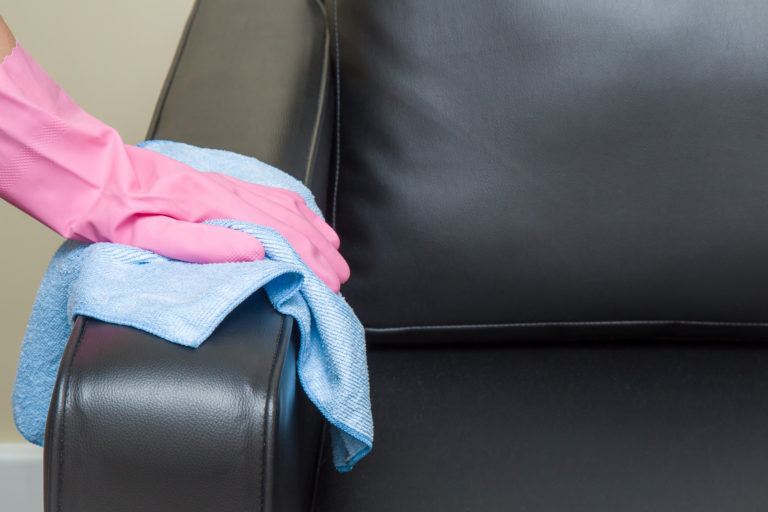
Quick Tips
You sit on it. You spill on it. You press your hands into the arms of the chair, into the grain of the table, into the fabric of the couch, and leave behind traces of yourself. Sweat. Dead skin. Grease from whatever snack you promised yourself you wouldn’t eat in the living room. It builds. Layers of neglect, a slow decay you pretend isn’t happening. You don’t notice until the stain spreads, until the fabric smells like something foreign, until you run a finger along the surface and leave a trail in the dust. You tell yourself you’ll clean it tomorrow. Tomorrow was three months ago.
How to Clean Furniture: 6 Steps to Wiping Away the Evidence
1. Accept That This Is a War You Will Never Win
You clean it today, it’s dirty tomorrow. That’s the game. You wipe down the coffee table, and by the time you stand up, a new layer of dust has already started forming. According to the American Cleaning Institute, household furniture collects a disturbing amount of dust, bacteria, and allergens even if you never touch it. Your couch? A sponge for sweat and body oils. Your wooden table? A landing strip for everything airborne. Your leather chair? Absorbing everything. You’re not cleaning furniture—you’re erasing proof of your existence.
2. The Dust Comes First, Because It Always Does
Before you get to stains, before you get to spills, you have to deal with the dust. Dry cloth? Useless. It just spreads the filth around. Feather duster? You might as well blow on it and hope for the best. The How to Clean a Bookshelf guide recommends using a microfiber cloth or a vacuum with a brush attachment to actually remove dust instead of just rearranging it. Dust first, or all you’re doing is rubbing grime deeper into the surface. A losing battle fought with the wrong weapons.
3. Know Your Surface, or Destroy It
Wood, leather, fabric, plastic—each one requires a different approach. Water on unfinished wood? Ruined. Soap on leather? Cracked, dry, unforgiving. Too much liquid on fabric? A slow death by mildew. The How to Clean a Wooden Table guide warns against generic cleaners—one mistake, and you’ve stripped away more than just dirt. Read the labels. Test a small area. Or just accept the damage and call it a new aesthetic.
4. The Stains That Won’t Confess
The coffee rings. The wine spill. The mysterious dark spot you’ve chosen not to acknowledge. Some stains sit on the surface. Others have dug deep, made a home, built a life for themselves. For fabric, use a mix of warm water and mild detergent—nothing too harsh, unless you want a new stain to replace the old one. For leather, a dab of white vinegar and water, but not too much, or you dry it out. The How to Clean a Couch guide says to blot, never scrub, because scrubbing just spreads the stain like a crime scene that won’t wash away.
5. Disinfect, but Don’t Kill Everything
Furniture isn’t just dirty—it’s alive. Bacteria. Fungi. Microscopic lifeforms you’ll never see but always touch. You want them mostly dead, not completely gone. The Centers for Disease Control and Prevention warns that over-disinfecting surfaces can create stronger, more resistant bacteria. Use a mild disinfectant on high-touch surfaces, but don’t soak everything in chemicals. Because the moment you sterilize it all, the world starts filling it up again.
6. Accept That You’ll Have to Do This Again
You stand back. The couch looks cleaner. The table shines. The chair doesn’t smell like regret anymore. But you know the truth. This isn’t over. The dust is already settling. The next spill is coming. The next stain is waiting. You’ll clean it again, and again, and again, because that’s what this is—a cycle, an endless fight against time, against decay, against yourself.
How Professionals Clean Furniture
The professionals don’t just clean—they restore. Steam cleaning for fabric, conditioning for leather, refinishing for wood. They don’t waste time with household remedies. They break down the problem at a molecular level. The International Janitorial Cleaning Services Association recommends deep-cleaning furniture at least twice a year to prevent buildup. If your couch looks like a landfill, if your wooden table has more stains than wood grain, it might be time to let the experts take over.
Final Thoughts
You’ve cleaned your furniture. For now. The stains are gone, the dust is wiped away. But you know better. The dirt always comes back. The spills, the sweat, the fingerprints—they wait for you. And one day, when you least expect it, you’ll be here again, wiping, scrubbing, trying to erase what can never truly be erased.